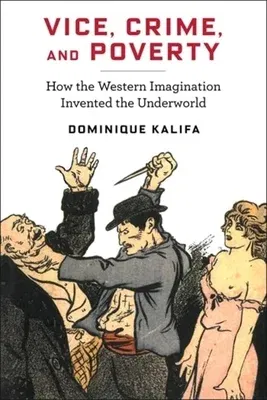Dominique Kalifa
(Author)Vice, Crime, and Poverty: How the Western Imagination Invented the UnderworldPaperback, 26 October 2021

Qty
1
Turbo
Ships in 2 - 3 days
Only 2 left
Free Delivery
Cash on Delivery
15 Days
Free Returns
Secure Checkout

Part of Series
European Perspectives: A Social Thought and Cultural Criticism
Print Length
296 pages
Language
English
Publisher
Columbia University Press
Date Published
26 Oct 2021
ISBN-10
0231187432
ISBN-13
9780231187435
Description
Product Details
Author:
Book Format:
Paperback
Country of Origin:
US
Date Published:
26 October 2021
Dimensions:
22.1 x
14.22 x
1.78 cm
ISBN-10:
0231187432
ISBN-13:
9780231187435
Language:
English
Location:
New York
Pages:
296
Publisher:
Weight:
385.55 gm